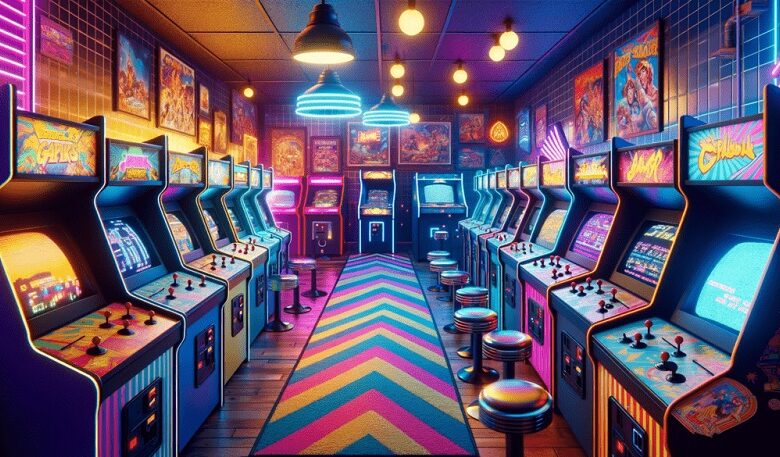The Evolution of Arcades: From Pinball to Pixels

Agnibeena Ghosh/10th June 2024
The story of arcades is a vibrant and multifaceted journey through the history of entertainment. Arcades, with their bright lights, buzzing sounds, and rows of game cabinets, have been a cultural phenomenon that has evolved significantly over the decades. From the early days of pinball machines to the digital revolution of video games, arcades have left an indelible mark on the landscape of gaming and leisure.
The origins of arcades can be traced back to the late 19th and early 20th centuries. The precursor to modern arcade games was the penny arcade, which featured mechanical games that operated on a coin-insert mechanism. These games included everything from fortune-telling machines to strength testers. However, it wasn’t until the 1930s and 1940s that the first significant arcade craze emerged with the advent of pinball machines.
Pinball machines became immensely popular in the 1930s. These machines, which used steel balls and a series of flippers to navigate obstacles, were not only a test of skill but also a form of gambling in some cases. The game’s popularity soared, despite being banned in several cities for being too closely associated with gambling. Over time, pinball evolved, incorporating electronic elements and more intricate designs, setting the stage for the next big leap in arcade history.
The 1970s marked a pivotal moment for arcades with the introduction of video games. This era saw the birth of iconic games like Pong (1972) and Space Invaders (1978). Pong, created by Atari, was a simple yet addictive table tennis simulation that captivated players with its straightforward mechanics. Space Invaders, developed by Taito, revolutionized the industry with its engaging gameplay and high-score competition, paving the way for the golden age of arcade games.
The early 1980s are often regarded as the golden age of arcades. During this period, arcades became a central part of popular culture, and video games saw unprecedented innovation and popularity. Classics such as Pac-Man (1980), Donkey Kong (1981), and Galaga (1981) dominated the scene. These games not only featured engaging gameplay but also introduced memorable characters and storylines. Arcades became social hubs where people of all ages gathered to compete for high scores and enjoy the immersive experiences offered by these new forms of entertainment.
The late 1980s and early 1990s continued to see advancements in arcade technology and game design. The introduction of fighting games like Street Fighter II (1991) and Mortal Kombat (1992) brought a new level of excitement and competition to arcades. These games emphasized multiplayer interaction, with players facing off against each other in intense battles. The graphics and sound capabilities of arcade machines also improved, offering more detailed and immersive experiences.
Despite the success and popularity of arcades, the industry began to face challenges in the mid-1990s. The rise of home gaming consoles such as the Nintendo Entertainment System (NES) and the Sega Genesis provided players with the ability to enjoy high-quality gaming experiences without leaving their homes. This shift in the gaming landscape led to a decline in the number of arcades and the diversity of games they offered.
However, arcades did not disappear entirely. Instead, they adapted to the changing times. The late 1990s and early 2000s saw a resurgence of arcades in the form of entertainment centers and family-friendly venues. Places like Dave & Buster’s and Chuck E. Cheese’s combined arcade games with food and other forms of entertainment, creating a more diverse and appealing experience for visitors. Additionally, Japanese arcades, or game centers, continued to thrive, offering a unique and extensive array of games, from rhythm games to elaborate, immersive experiences.
In recent years, there has been a nostalgic revival of arcades. Retro-style bars and arcades have popped up in many cities, drawing in both those who remember the golden age and a new generation of gamers. These venues often feature classic arcade cabinets, pinball machines, and modern indie games, creating a blend of old and new that appeals to a wide audience.
The history of arcades is a testament to the enduring appeal of interactive entertainment. From the mechanical marvels of the early 20th century to the digital wonders of today, arcades have continually evolved to captivate and entertain players. They have not only provided countless hours of fun but have also shaped the gaming industry and popular culture. As technology continues to advance, it will be fascinating to see how arcades adapt and continue to be a cherished part of the gaming experience.






